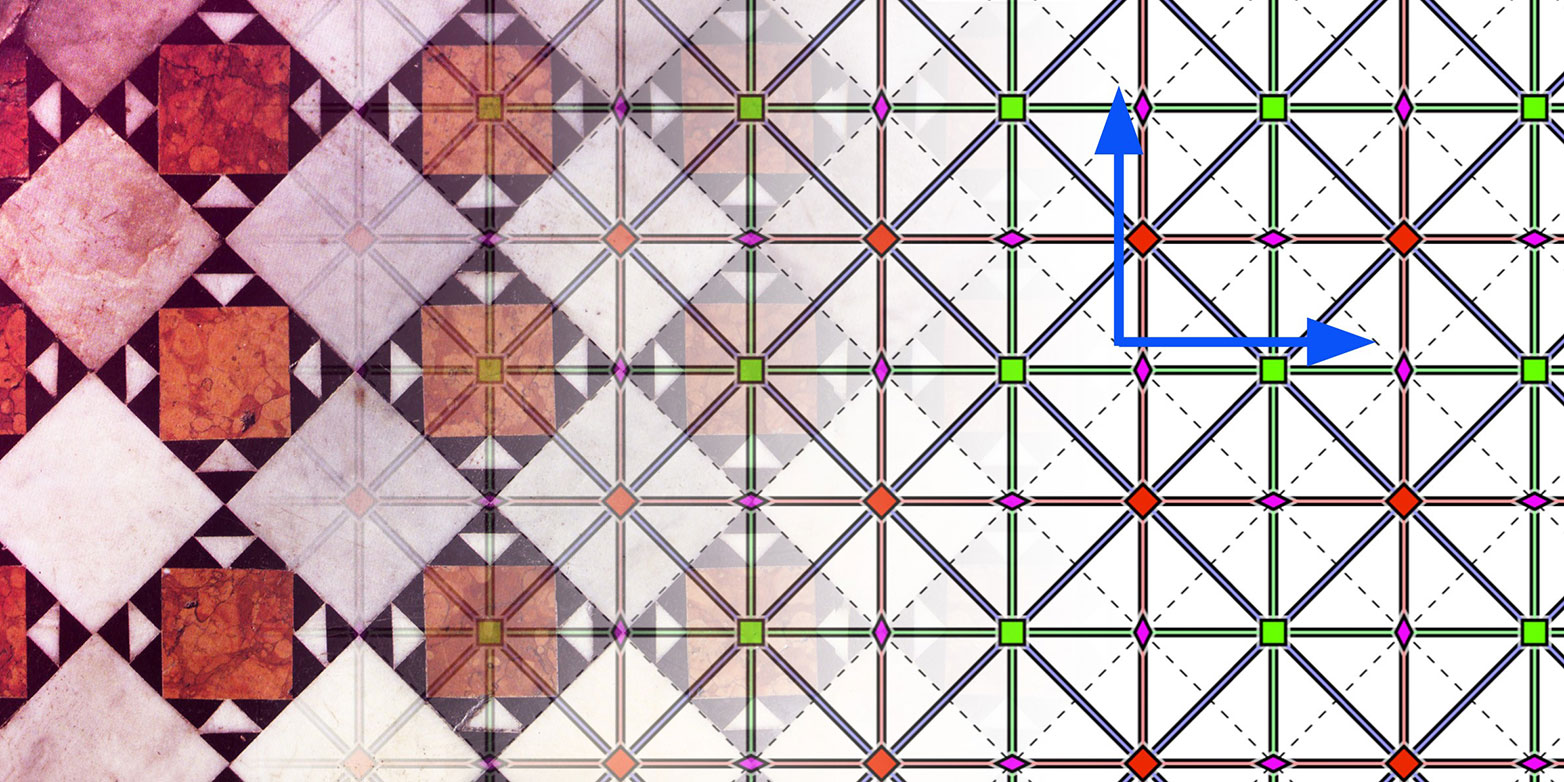The relationship between ornaments and crystals
At the Architecture Biennial in Venice, a group of students, a colour artist, an architect and an ETH surface physicist will examine the symmetries of ornaments at the Basilica di San Marco. There will be an accompanying exhibition.
The use of ornaments is widespread in architecture, decorative arts, design, textiles and book artwork. They structure and decorate buildings, walls and carpets. Ornaments depict patterns characterised by regularly recurring and repeating motifs, and whose structure exhibits numerous axes of mirroring and symmetry.
Ornamental symmetries and structuring principles show surprising relationships to the structuring patterns of surface physics, such as those that can be observed in crystals. The two-dimensional atomic structure of crystal surfaces has been the subject of Mehmet Erbudak’s work for many years. He is an ETH researcher and Surface Physicist with the title of Professor Emeritus.
At the 16th Architecture Biennial, which will take place until 25 November 2018 in Venice, he will study the colours and characteristics of the floor ornamentation of the Basilica di San Marco in Venice on 13 September together with twelve international architecture students, the architect Gani Turunç and the artist Jörg Niederberger. They will prepare their results for an exhibition at the Turkish pavilion.
The group will thereby apply cultural and scientific methods on the ornaments. The foundation for this will be the classic work “The Grammar of Ornament” by the English architect and designer Owen Jones (1809 – 1874). Published in 1856, this book contains the general principles of the structuring of shape and colour in architecture and the decorative arts. The ornaments are characterised and classified according to cultural criteria.
Understanding symmetries
In contrast to that approach, Mehmet Erbudak uses a mathematical method that is established in crystallography. This method can be used to categorise two-dimensional and regularly recurring patterns of ornaments based on their symmetric properties. Erdubak’s method is based on historical precedent: the two mathematicians George Pólya (1887 – 1985), a professor at ETH Zurich, and Andreas Speiser (1885 – 1970), a professor at the University of Zurich, initiated the group-theory analysis of ornaments in the 1920s.
In 1924, Pólya published a pioneering article on crystallography entitled “On the Analogy of Crystal Symmetry in the Plane”. Speiser’s doctoral candidate Edith Müller applied this theory to Moorish ornaments in 1944. Her dissertation contained a method for mathematically classifying the ornaments from the Alhambra in Granada.
“This method can be used to assign both two-dimensional crystal structures and ornaments to a total of 17 mathematical groups”, says Erbudak. In Venice, the work will involve applying this method to the marble ornaments of the Basilica di San Marco for the first time. “We want to study and interpret the ornamental symmetries in the basilica.” For example, Erbudak is interested in why fourfold symmetries are so predominant on the ornaments instead of threefold symmetries, since the trinity is so central to Christian theology.

